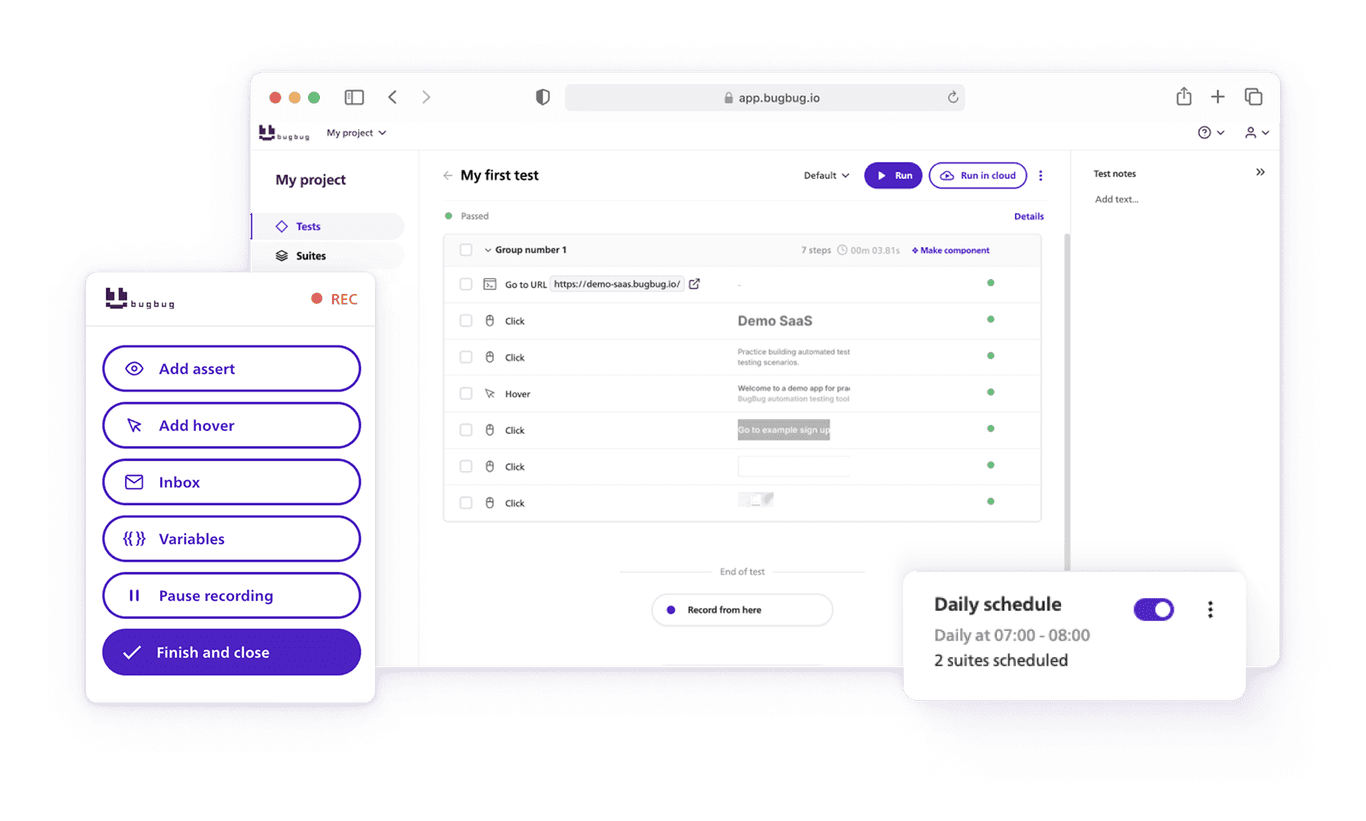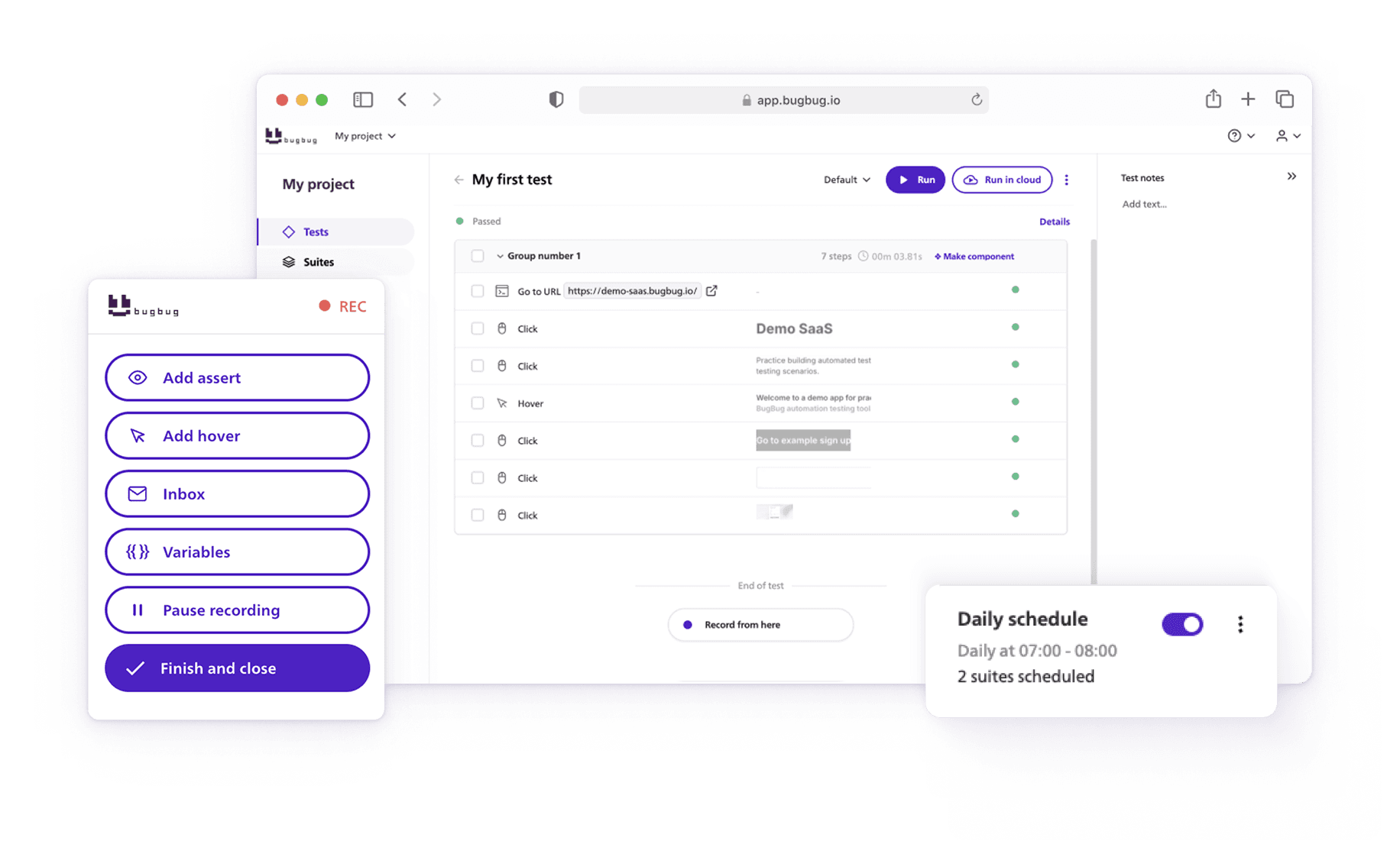🤖 Summarize this article with AI:
💬 ChatGPT 🔍 Perplexity 💥 Claude 🐦 Grok 🔮 Google AI Mode
If you’ve ever waded through a swamp of failing tests, you know the feeling: instead of accelerating releases, your automation slows everything down. Scripts break on minor UI changes. Suites balloon into monsters that no one trusts. Regression cycles drag on for hours, sometimes days.
Scaling test automation isn’t just a technical challenge—it’s a strategic one. And most teams get it wrong. They race to automate everything, then burn out under the weight of fragile scripts and spiraling maintenance.
- Why Do So Many QA Teams Struggle to Scale?
- 1. Build a Strong Foundation Before You Automate
- 2. Automate the Right Tests (Not Every Test)
- 3. Tame Flaky Tests Before They Derail You
- 4. Optimize Execution with Cloud Scheduling and Parallelism
- 5. Make Automation Accessible Beyond QA
- 6. Continuously Improve, Don’t “Set and Forget”
- The Payoff: From Fragile to Scalable
- Final Thoughts
Check also:
The truth? Automation is supposed to help you ship faster, not trap you in test debt.
In this article, I’ll walk you through proven strategies for scaling test suites—and show you how BugBug can turn your automation from a liability into a competitive advantage.
Scale test automation without code
Test easier than ever with BugBug test recorder. Faster than coding. Free forever.
Get started
Why Do So Many QA Teams Struggle to Scale?
Before we fix it, let’s diagnose the pain points:
- Test sprawl: Suites grow without structure, creating duplication and chaos.
- Fragile scripts: Hardcoded selectors mean one UI tweak equals 50 broken tests.
- High maintenance costs: Teams spend more time fixing automation than running it.
- Slow execution: Suites that run overnight—or worse, over the weekend—kill feedback loops.
- Poor test data practices: Flaky automation that fails inconsistently undermines trust.
Sound familiar? You’re not alone. These are systemic issues, not personal failures. The good news is that they can be solved with the right mix of strategy, tools, and process.
1. Build a Strong Foundation Before You Automate
Scaling starts with clarity. Define:
- What you’re automating (and why).
- Who owns test creation and maintenance.
- How success will be measured.
SMART goals (specific, measurable, achievable, relevant, time-bound) are your friend here. For example:
- Reduce regression cycle from 2 days to 2 hours within 3 months.
- Increase coverage of critical user flows to 90% by Q4.
👉 With BugBug, you can build this foundation by structuring tests into suites. Start small—say, a “Core Features” suite for your login, signup, and checkout flows—then expand strategically. The default “All Tests” suite ensures nothing slips through the cracks as you grow.
2. Automate the Right Tests (Not Every Test)
Here’s the brutal truth: not everything deserves automation.
Prioritize:
- High-volume, repetitive tests.
- Business-critical user flows.
- Regression checks that would be painful to do manually.
Think 80/20 rule: 20% of well-designed tests protect 80% of your application.
👉 With BugBug, you can tailor suites for different purposes:
- Core Features Suite (daily runs on critical paths).
- Full Regression Suite (pre-release, comprehensive).
- Feature Branch Suite (work-in-progress tests).
- Multi-profile Suite (e.g., different languages or roles).
This lets you scale without drowning in unnecessary scripts.
3. Tame Flaky Tests Before They Derail You
Flaky tests are the silent killers of automation. They erode trust, waste time, and inflate maintenance costs.
👉 BugBug tackles this with auto-retry for flaky tests:
-
If a test fails due to transient issues (like a slow server), it automatically retries.
-
If the retry passes, the run is logged as “auto-retried”—so you see the hiccup but don’t panic.
-
Test will fail after however many retries the user sets (disabled/1/2/3/4/5).
This means fewer false alarms, more focus on real defects, and dramatically lower test debt.
Also check our guide on how to deal with flaky tests.
4. Optimize Execution with Cloud Scheduling and Parallelism
As your suite grows, execution time becomes the bottleneck. A 2-hour regression run feels fine—until your suite grows to 12 hours and blocks every release.
👉 BugBug solves this with:
- Cloud scheduling: Run suites automatically in the cloud, across multiple environments.
- Parallel execution: Tests run simultaneously, not sequentially, slashing feedback time.
This isn’t just convenience—it’s the difference between deploying daily versus weekly.
5. Make Automation Accessible Beyond QA
Test automation dies in silos. If only a few engineers can contribute, scaling stalls.
That’s why ease of use matters. BugBug comes with a test recorder—no heavy coding required—so even non-technical team members can build reliable tests.
This democratizes automation, distributes ownership, and lets QA, devs, and PMs all play a role in quality.
6. Continuously Improve, Don’t “Set and Forget”
A test suite is a living system. Without care, it rots.
Best practices:
- Regularly prune outdated tests.
- Refactor for maintainability (use shared methods, modular design).
- Track flaky tests and fix root causes.
- Gather team feedback and evolve with the product.
BugBug makes this easier with run histories, suite-level organization, and auto-retry logs, giving you visibility into what’s truly fragile versus what’s solid.
Automate your tests for free
Test easier than ever with BugBug test recorder. Faster than coding. Free forever.
Get started
The Payoff: From Fragile to Scalable
Scaling automation isn’t about running more tests. It’s about running the right tests, at the right time, with the right foundation.
Teams that get this right see:
- Regression cycles cut from days to hours.
- Confidence restored in automation results.
- QA transformed from bottleneck to accelerator.
👉 BugBug isn’t just another testing tool—it’s your partner in building automation that scales without spiraling into chaos.
Final Thoughts
Badly scaled automation is like a Jenga tower: one shaky block and the whole thing collapses. Well-scaled automation is like a suspension bridge: strong, flexible, and able to carry ever-growing loads.
The choice is yours. With the right strategy—and the right tool—you can build a test suite that doesn’t just keep up with development but actually accelerates it.
Ready to scale without drowning in test debt? Start with BugBug today.
Happy (automated) testing!



